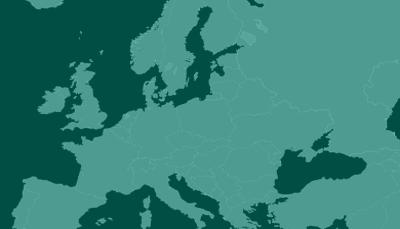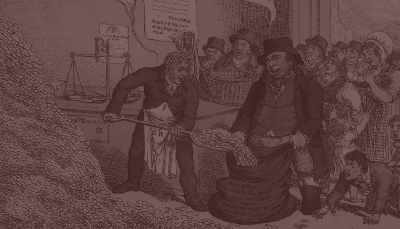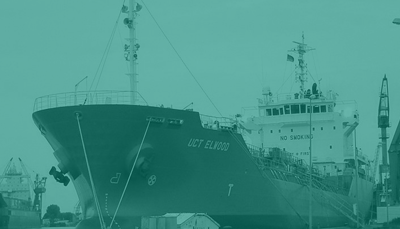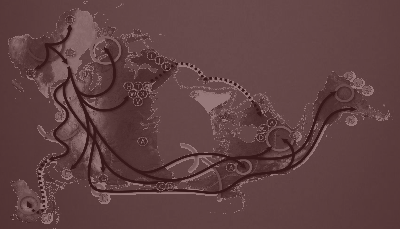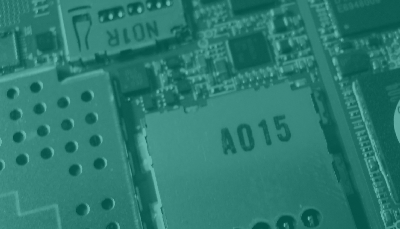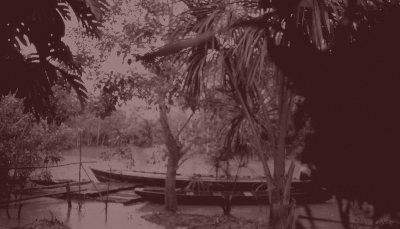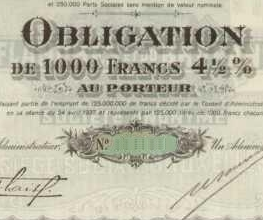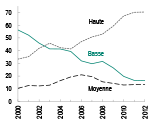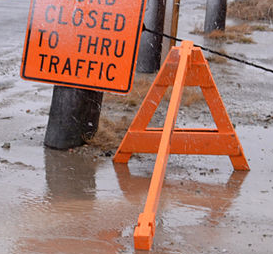Retaking Asarco is way to preserve huge stake in mines' parent company, analysts say
By Tim Steller
ARIZONA DAILY STAR
Tucson, Arizona | Published: 09.06.2009
Ten years ago, Grupo Mexico swooped in with a surprise bid for Asarco and its prize property, Southern Peru Copper, prying them away from other bidders.Ten years later, the future of Tucson-based Asarco LLC — as well as its workers, suppliers and communities — remains tightly tied to the Toquepala and Cuajone pits in Peru.
One of the main reasons Grupo Mexico has pursued retaking control of Asarco so vigorously, analysts said last week, is to erase a legal judgment that could rob the Mexican conglomerate of a huge stake in the Peruvian mines' parent company, Southern Copper.
"The primary driver is to get rid, for once and for all, of this possibility," Francisco Suarez, head of equity research at the Actinver brokerage in Mexico City, said in Spanish.
Last Monday, U.S. Bankruptcy Judge Richard Schmidt in Corpus Christi, Texas, recommended that Grupo Mexico's plan to take Asarco out of bankruptcy be approved, rather than the plan by India-based Sterlite Industries. The two engaged in a bidding war for Asarco, Southern Arizona's 16th-largest employer, up until the days before Schmidt's ruling.
By spending more than $2.6 billion to buy Asarco back and pay its creditors in full, Grupo Mexico will preserve billions more dollars in Southern Copper stock, as well as a $1.3 billion penalty assessed by a federal judge, analysts noted.
"They'll actually save money by buying the company," said Gary Dillard of Bisbee, who edits a magazine on mining in the West called Pay Dirt. "Outside of that, do they desperately need Asarco? Probably not."
Grupo Mexico's bankruptcy attorney, Robert Moore, pointed out that the company has appealed the judgment, and even if it lost that appeal, he argued, it would not be found liable for the entire amount.
Suarez, Dillard and other analysts also pointed to other benefits Grupo Mexico could take from again operating Asarco, a property the parent ran into the ground in the years 1999-2005. Once out of bankruptcy, Asarco will not be burdened with the billions of dollars in liabilities that helped drag the company down before.
"Asarco can make some money. I think that's been proven in the past few years," Dillard said.
Allure of Southern Peru
Grupo Mexico's arrival in Arizona was likely inspired by its attraction to Southern Peru, Dillard and others said. The Mexican conglomerate didn't say so in 1999, when it broke up other merger deals and bought Asarco, but to many industry watchers the buyout didn't make sense with Asarco as its main target. It was Asarco's majority ownership of Southern Peru that seemed attractive.
"No one who looked at Asarco's operations in the U.S. had any doubt they were really after Southern Peru," Dillard said.
Not only do Peruvians work for less than American miners do, but the Peruvian ore bodies themselves are richer, with a higher concentration of copper and byproducts such as molybdenum.
"Peru is a higher-grade property and a lower-cost property, so it tends to be more profitable than (Grupo Mexico's) Mexican properties or the Arizona properties," said George Leaming of Marana, who runs the Western Economic Analysis Center.
Asarco could have helped diversify Grupo Mexico's holdings, but it also had major drawbacks: Asarco was strapped with environmental liabilities from a century of mining around the country, Asarco's production costs are high, and the price of copper was exceptionally low.
"Southern Peru was the plum," Dillard said.
Within a few years of Grupo Mexico taking over Asarco, the parent company reached to pluck that plum. Grupo Mexico arranged to transfer the 54 percent stake in Southern Peru interest away from Asarco to another Grupo subsidiary for hundreds of millions of dollars.
The U.S. Justice Department intervened in August 2002, filing suit and arguing that without its interest in Southern Peru, Asarco could go bankrupt and be unable to cover its liabilities for pollution at sites across the country, such as a former smelter in Tacoma, Wash. But within six months, the two sides came to a settlement the Justice Department bragged about in a press release:
"This exceptional settlement will guarantee necessary remediation funds are available to protect human health and the environment," Kelly A. Johnson, assistant U.S. attorney general, said in the release.
Under the settlement, Grupo Mexico paid $765 million for the majority share of Southern Peru and agreed to put $100 million in an environmental trust fund. But in the end, the settlement didn't achieve the government's aims: Asarco filed for bankruptcy anyway, in August 2005, and ended up with environmental claims in the billions.
Comeback trail
In December 2005, Judge Schmidt liberated Asarco's management from Grupo Mexico by appointing an independent board of directors. Soon after, the independent Asarco began formulating a plan to retake its stake in Southern Peru.
In February 2007, Asarco sued Grupo Mexico to get its shares of Southern Peru back, arguing that when Grupo took the shares, the sale was a "fraudulent transfer" intended to shield Southern Peru from the reach of Asarco's creditors.
And in the end, U.S. District Judge Andrew Hanen agreed, ordering in April that Grupo Mexico return the shares — today worth about $7.2 billion — and pay a $1.3 billion penalty. Since Southern Peru has been absorbed into a bigger subsidiary that includes Mexican mines, called Southern Copper, the stake in Southern Peru amounted to about 30 percent of the new company, Hanen determined.
Grupo Mexico appealed the ruling, but it also got serious about buying back Asarco. During a two-week hearing last month, after many promises it would do so, Grupo Mexico finally proposed a plan that would pay back Asarco's creditors in full with interest, Schmidt said in his report.
The plan would cost Grupo Mexico $2.2 billion in cash, plus a $280 million promissory note and a $200 million working capital facility for Asarco to use on its exit from bankruptcy. Perhaps most importantly, the legal judgment forcing Grupo Mexico to give back what now amounts to about $7.3 billion in Southern Copper stock would be voided, as would the $1.3 billion penalty.
That difference is Grupo Mexico's key motivation, analyst Suarez said.
But not every analyst agrees. Jorge Beristain, head of North American metals and mining equity research for Deutsche Bank in New York City, noted that Grupo Mexico may well have won its appeal of the judgment anyway.
While Beristain acknowledges that buying back Asarco limits Grupo Mexico's risks, "it's not as simple as saying they only did this to stave off a loss."
The obvious reason for buying Asarco, he said, "is that they think Asarco's a good asset."
And Moore, Grupo Mexico's attorney, said that under bankruptcy law, it's unlikely the parent company would ever have been liable for more than any amount beyond the full cash value of the creditors' claims.
"It's a false assumption to say we're avoiding $7 billion by paying $2 billion," Moore said. However, he acknowledged, "if Grupo Mexico had no interest in maintaining ownership and walked away from the company, there is the risk that they would lose the full judgment."
What all analysts agree on is Grupo Mexico will be much better off if it can put the bankruptcy and Southern Peru judgment behind it in one fell swoop.
"The main thought here is that the company decided to spend as much money as it needed in order to resolve the whole matter with the trials in the U.S.," said Rodrigo Heredia of the IXE brokerage house in Mexico City. "The main idea is let's resolve this and move on."
![[Most Recent Quotes from www.kitco.com]](http://www.weblinks247.com/indexes/gfms.gif)
![[Most Recent Quotes from www.kitco.com]](http://www.kitconet.com/charts/metals/base/spot-copper-30d.gif)
![[Most Recent Quotes from www.kitco.com]](http://www.kitconet.com/charts/metals/base/zinc-d.gif)
![[Most Recent Quotes from www.kitco.com]](http://www.kitconet.com/charts/metals/base/lead-d.gif)
![[Most Recent Quotes from www.kitco.com]](http://www.kitconet.com/charts/metals/base/spot-nickel-30d.gif)

